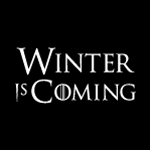Just how different was George R.R. Martin’s original Game of Thrones outline?
“As you know, I don’t outline my novels. I find that if I know exactly where a book is going, I lose all interest in writing it.” So says George R.R. Martin at the start of his letter outlining A Game of Thrones and the rest of A Song of Ice and Fire to his publisher. The letter was posted by the Twitter account of the British bookseller Waterstones, and confirmed by HarperCollinsUK’s account.
Martin submitted this outline for his trilogy alongside the first 170 pages of A Game of Thrones, and at this point, all of his future plot points make sense. But aside from a continued focus on his five main characters–Tyrion, Bran, Arya, Jon, and Dany–almost nothing but a few long-passed plot point remain. Still, it’s super interesting to see the specific ways that the story-as-plotted changed, and to try to figure out why.
Check out the letter and some of its highlights after the jump….
Page 1 of Martin’s letter–click to expand
What stands out about the original story is how fewer factions exist. In the Seven Kingdoms, it’s just Lannisters and Starks, while overseas, just Dothraki and Targaryens. Joffrey Baratheon is mentioned, but the outline seems almost totally unconcerned with House Baratheon.
This story is also more clearly related to the Wars of the Roses, with the bloody civil war between Lancaster and York was resolved by the foreign-based invasion of Henry VII. Jaime is cast as Richard III here: “Jaime Lannister will follow Joffrey on the throne of the Seven Kingdoms by the simple expedient of killing everyone ahead of him in the line of succession.” Meanwhile, Tyrion seems like a direct analogue for Neville, the Earl of Warwick, the “Kingmaker,” who played both sides in that war.
Once the story reached King’s Landing, though, and Martin started fleshing out the political intrigue, two factions became half a dozen as Littlefinger, Varys, Cersei, and the Baratheon brothers all appear–the Greyjoys also appear to be a late addition to the story, with the original draft suggesting that it’s Tyrion who sacks Winterfell. Thus the two kings, Robb and Joffrey, become five, and the story becomes significantly more complex.
Page 2 of Martin’s letter–click to expandYet while Martin’s original story may be less complicated, many of characteristics we associate with Game of Thrones were still present. The body count remains high–Robert, Ned, Cat, Robb, Viserys, and Joffrey all die. The aura of family tragedy remains as well, in lines like this: “Sansa Stark, wed to Joffrey Baratheon, will bear him a son, the heir to the throne, and when the crunch comes she will choose her husband and child over her parents and siblings, a choice she will later bitterly rue.” The letter also describes “a bitter estrangement between Jon and Bran” over Jon’s inability to protect his family while in the Night’s Watch.
Part of me is pretty happy with the significantly expanded version of the story that we got–and I would say that that expansion has led to the popularity of the books and its adaptation as a TV series. But I do also miss the relative simplicity of A Game of Thrones and would be curious to see what a trilogy with this narrower scope might have ended up looking like.
Page 3 of Martin’s letter–click to expandA few other thoughts:
- Arya is the center of a love triangle with Jon and Tyrion in this. How relieved am I that this didn’t make it into the final version? Well let’s just imagine fights between #TeamJarya and #TeamAryion…
- Speaking of Jon, the fact that his parentage is referred to obliquely here suggests original intent was that he wasn’t Ned’s child. It makes sense that most of the evidence for his true parentage comes from A Game of Thrones.
- Sansa isn’t one of the five characters Martin wanted to make it to the end, but I think it’s fair to say that his feelings about her importance have changed.
- Lord Tywin, who swiftly became the lead villain over Jaime once he appeared, isn’t mentioned at all. Nor are the Boltons or Freys, let alone the Tyrells or Martells.
- Drogo is a villain in the initial version of Dany’s story. She also invades with a Dothraki army in the second book.
- The main thing that looks like a spoiler is [spoiler]Dany happening across a clutch of dragon eggs after fleeing the Dothraki when she kills Drogo. She still supposedly leads a Dothraki invasion in the second book, though, implying that with the dragons she’ll be able to acquire a new khalasar–something the end of A Dance with Dragons suggests is imminent.[/spoiler]
- Martin has a lot more happen in “battles” in this than he’s done on the page. Robb maims Joffrey in one, and dies in another. It seems like GRRM is much less interested in battles in the final product than he was in the initial planning–and that’s probably a good thing, given the emotional power of the Red Wedding.
- Martin calls this a “high fantasy” and suggests that the biggest threat to the Seven Kingdoms are “the Others” instead of the civil war or Daenerys’ invasion. This suggests that the heroic fantasy ending I wrote about here was the original plan.
- Perhaps the biggest takeaway here is the date of the letter: Decemeber 7th, 1993. Given that the novel was published in August 1996, it seems that Martin’s every-other-year releases of the first three novels in A Song of Ice and Fire was the aberration, while 3-5 year waits between novels is normal.




Spoiler Alert!
Please take care to tag spoilers in your comments by wrapping them with <spoiler></spoiler>. Spoilers in comments are hidden by a gray overlay. To reveal, simply hover or tap on the text!